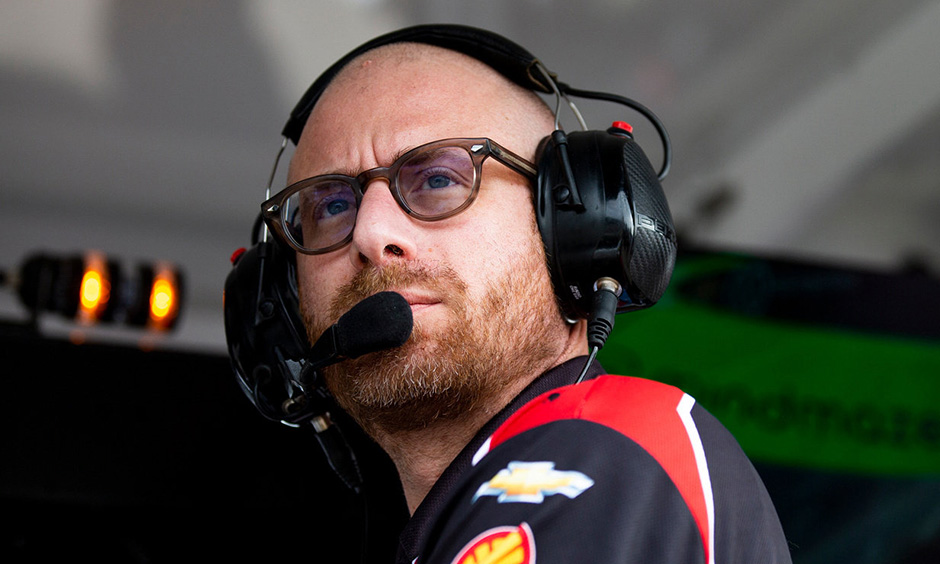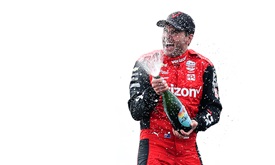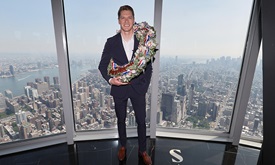The Setup: Streets of Detroit with Daniele Cucchiaroni
JUN 02, 2023
Note: This is a continuing series for INDYCAR.com, with different guests, leading into each race weekend for the NTT INDYCAR SERIES, focusing on various technical challenges of each respective circuit.
The NTT INDYCAR SERIES has reached the seventh round of the 2023 season with this weekend’s Chevrolet Detroit Grand Prix presented by Lear.
The new, 1.7-mile, nine-turn street circuit runs through parts of downtown and along Jefferson Avenue and back around to Atwater Street along the Detroit River, with a new split pit lane also part of the features. There will be two practice sessions and a qualifying bout ahead of Sunday’s 100-lap (164.5 miles) race set for 3 p.m. ET (live, NBC, Peacock, INDYCAR Radio Network).
This week’s featured guest is Daniele Cucchiaroni, race engineer of the No. 14 AJ Foyt Racing/Sexton Properties Chevrolet driven by Santino Ferrucci, who finished a career-best third in last Sunday’s 107th Running of the Indianapolis 500 presented by Gainbridge.
Q: How do you prepare for a track where you’ve never been before?
Daniele Cucchiaroni: We're going to start with something similar to a street course setup. I would say when you go to a new track like this, there are three important elements you would like to take in consideration. The first one we've been working at home for a preparation in terms of simulation. You try, even with the help of GM or even using our internal simulator, basically you're trying to create the best track profile that you can have using all the tools that you have. For example, we just create our maps from using Google Earth. We have the possibility to create whatever path we want in the planet and basically create this driving path for us. That definitely helped, for sure. So, we don't know where the series is going to just place the walls or how narrow the track will be, but at least it's something that's going to give you an idea of the kind of speeds you're going to find in a circuit. Jim Olson also is helping us in this, so let me thank him, as well. Definitely, it's going to help you to understand what kind of track layout you're facing with. This will help us to do some pre-evaluation and establish the right gears, the right main concept of the setup we want to start with. Another important aspect would be when you face a new track is the diversification. So, basically you would like to not start both or three or four cars, depends how many cars that the team has, I would say not with the same setup because being in a new place you would like to explore more options as big as possible. In this regard, probably some bigger teams with more cars that will have more advantages so they can speed up their learning process. Another thing that I will say when you face a new track is the reaction time. You need to react quickly, so people, to all tools, everything, all the personnel working in the data analysis after the session, tire analysis, all the people should have the right instruction and procedure to go through the data as quick as possible to react and get ready for the next session. That's, I would say, the three more important aspects.
Q: From that aspect, do you anticipate unloading with a stiffer damper setup like we do for the Streets of St. Petersburg, or softer like the street race in Long Beach, California?
Cucchiaroni: Yeah, it's not very easy to establish right away what kind of spring stiffness you want to have in the vehicle. The reason is because the layout, we know there are 90-degree corners, so you need a good reaction, good activity on the car in the steering input and quick rotation to just go through those 90-degree corners as quick as possible. It's not as easy to know how stiff or soft you want to go because from our track data, we are missing these right now. The true track profile, we don't know how bumpy it is going to be. And we'll see this because in all the other tracks, we have a real library, real data, and also we have laser-scan information. So, we know the roughness of each track. We have a complete library. Of course, for a new track, you don't know what's the track's condition, and the stiffness is dictated by that. Basically, right now we're going to start with an average – a medium – of what we think we're going to find in an average street race, like Long Beach, for example. Maybe very rough, like Nashville, or even smoother. It's a little bit difficult. The important thing is we have to be reactive. We have to do very, very quick the data analysis in real time so people are prepared with all the tools that we have, and then we have to be ready to make a quick change based on what we see in our data.
Q: And considering that it’s hard to establish the amount of aerodynamic vs. mechanical to move the setup to, right?
Cucchiaroni: Yeah, correct. For example, it's only dictating how much you can make the underwing work correctly, what kind of (ride) heights you can run. So far, we're going to start in an average situation, but we don't know if we're going to end up like Nashville, where you have the needle moving towards the mechanical rather than the aero. Or places, for example, like St. Petersburg, where it's still a street course but a little bit more aero dominant rather than Nashville. So up until being on track we don't see how much we can make this underwing work correctly. So, how we can be with it, with the ride heights, it's a little bit difficult to establish the proportion between the mechanical and the aero. We have an idea. We will have a better idea definitely after first practice. And as I told you in this regard, a team with multiple cars, they can do a diversification. They can start with different cars, with different stiffness levels. So, maybe one car more oriented toward the aero, another one more oriented toward the grip and then find the answer sooner. We are going to do something similar, but it might take some iteration before we get to the best place.
Q: What do you look at as a unique part of the track, and how do you think the split pit lane with be?
Cucchiaroni: I think it will be very exciting to see what's going to happen at the end of the straight. The straight is significantly long, so it'll be very, very interesting. I think there's a possibility to do overtakes because the corner, basically goes into the straight is very tight, so it's not an aero corner. I'm pretty sure that the people will get big tows, and there will have a lot of opportunities for overtaking, which will make it very, very, very exciting. And about the dual pit lane, it's very unique for us, but I think INDYCAR did the right choice because looking at the room available that we have, it's not very big. I think they made the right choice to split things into two. We'll see if one of the two seems like maybe can have a little bit of an advantage rather than the other one. If there is, probably going to be a very, very slight difference. But I think it's very exciting. Something new, something unique.
Q: Is this perhaps the most detailed and longest track walk you and the team will do this year?
Cucchiaroni: Yeah, definitely. So, we already collected some photographs in the previous weeks, and so we already have an idea. But, of course, the track walk is going to be very important because for the first time we're going to see the track layout with all the walls placed in the right location. We're going to document it, what we're going to see for the next year. Plus, it is the first time that we can finally see what our track limits are. So, yeah, I think we'll be very long in the details with the track walk, more than more than the other street circuits.
Q: Lastly, every driver has a preference for how a car drives. Some would prefer understeer instead of understeer and vice versa. What does Santino Ferrucci usually like?
Cucchiaroni: Santino has an amazing amount of car control. He doesn't like to have understeer. He's incredibly capable to deal with a car with more toward the oversteering side.



















